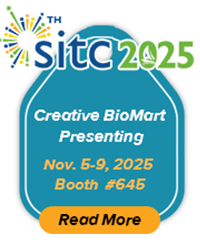Hoechst 33258, pentahydrate
| Cat.No. : | Hoechst 33258-022 |
- Specification
- Gene Information
- Related Products
- Download
| Description : | Hoechst dyes are widely-used cell membrane-permeant blue fluorescent DNA binding dyes that can be used for nuclear staining of live or fixed cells. The dyes have minimal fluorescence in solution, but become brightly fluorescent upon binding to DNA. Therefore, they can be used to stain cells without a wash step. The staining is very stable and non-toxic to live cells for several days or longer. |
| Form : | Yellow solid |
| Molecular Mass : | 623.96 |
| Molecular Information : | C25H27Cl3N6O |
| CAS number : | 23491-45-4 |
| Solubility : | Soluble in water up to 20 mg/mL |
| Absorption/Emission : | 352/461 nm (with DNA) |
| General Staining Protocol : | Live cell staining Below we provide two protocols for staining live cells with Hoechst. Staining by medium exchange results in uniform exposure of cells to probe. However, for some cell types, morphology or viability may be affected by medium exchange. In addition, floating dead cells may be lost during medium removal, and suspension cells must be collected by centrifugation to exchange the medium. Direct addition of 10× probe is a convenient staining method that doesn''t require medium exchange, but care must be taken to mix immediately yet gently to avoid high transient probe concentration or disruption of cells by pipetting. Note that we do not recommend adding highly concentrated dye directly to cells in culture, as this will result in local areas of high dye exposure. Live cell staining by medium exchange 1. Dilute Hoechst dye to 1 μg/mL in fresh, complete cell culture medium. Hoechst can be combined with other fluorescent probes. 2. Remove medium from the cells and replace with fresh medium containing Hoechst dye. 3. Incubate cells at room temperature or 37 centigrade for 5-15 minutes, then image. Note: Washing is not necessary for specific staining, but nuclear staining is stable after washing. Live cell staining by direct addition of 10× probe 1. Prepare 10× dye solution by diluting Hoechst dye to 10 μg/mL in fresh, complete culture medium. Hoechst can be combined with other fluorescent probes, which should be diluted to 10 times the final desired concentration. 2. Without removing the medium from the cells, add 1/10 volume of 10× dye solution directly to the well. 3. Immediate mix thoroughly by gently pipetting the medium up and down. For larger well sizes (e.g., 24-well to 6-well plates), the plate can be gently swirled to mix. 4. Incubate cells at room temperature or 37 centigrade for 5-15 minutes, then image. Note: Washing is not necessary for specific staining, but nuclear staining is stable after washing. Staining of fixed cells or tissue sections 1. Add Hoechst dye to PBS at 1 μg/mL. Hoechst can be included together with antibodies or other probes, and can be diluted in buffers with detergent or blocking agents if convenient. 2. Add the PBS with dye to cells or tissue sections and incubate at room temperature for at least 5 minutes. 3. Image the samples; washing is optional but not required. Note: Samples can be stored at 4 centigrade after staining and before imaging. |
| Probe cellular localization : | Nucleus |
| For live or fixed cells : | For fixed cells, For live/intact cells |
| Detection method/readout : | Fluorescence microscopy, Flow cytometry |
| Assay type/options : | DNA content/cell cycle profiling by flow cytometry, Long term staining (24-72h), No-wash staining, Real-time imaging, Tissue staining |
| Cell permeability : | Membrane permeant |
| Apoptosis/viability marker : | All cell stain |
| Fixation options : | Fix before staining (formaldehyde), Fix after staining (formaldehyde), Fix before staining (methanol), Fix after staining (methanol), Permeabilize after staining |
| Colors : | Blue |
| Staining bacteria or yeast : | Hoechst dyes stain bacteria more dimly than mammalian cells. Live or killed bacteria can be stained with 12-15 μg/mL Hoechst dye in PBS or 150 mM NaCl for 30 minutes at room temperature. The dyes tend to stain dead cells more brightly than live cells. In S. cerevisiae, Hoechst dyes stain both the nucleus and cytoplasm. When used to stain yeast at 12-15 μg/mL in PBS, Hoechst preferentially stains dead cells, with dim staining of live cells. |
| Stability : | Product is stable for at least one year from date of receipt when stored as recommended. It is not recommended to store working solutions of Hoechst dye, because the dye will be lost to precipitation or adsorption to the container over time. |
| Storage : | Store Hoechst 33258, pentahydrate solid desiccated at -20 centigrade, protected from light. |
| Reference : | 1. Science 282, 296 (1998) 2. Biotech. Histochem. 69, 152 (1994) 3. Exp. Cell Res. 211, 322 (1994) |
Not For Human Consumption!
Inquiry
- Reviews (0)
- Q&As (0)
Ask a Question for All Hoechst 33258 Products
Required fields are marked with *
My Review for All Hoechst 33258 Products
Required fields are marked with *



